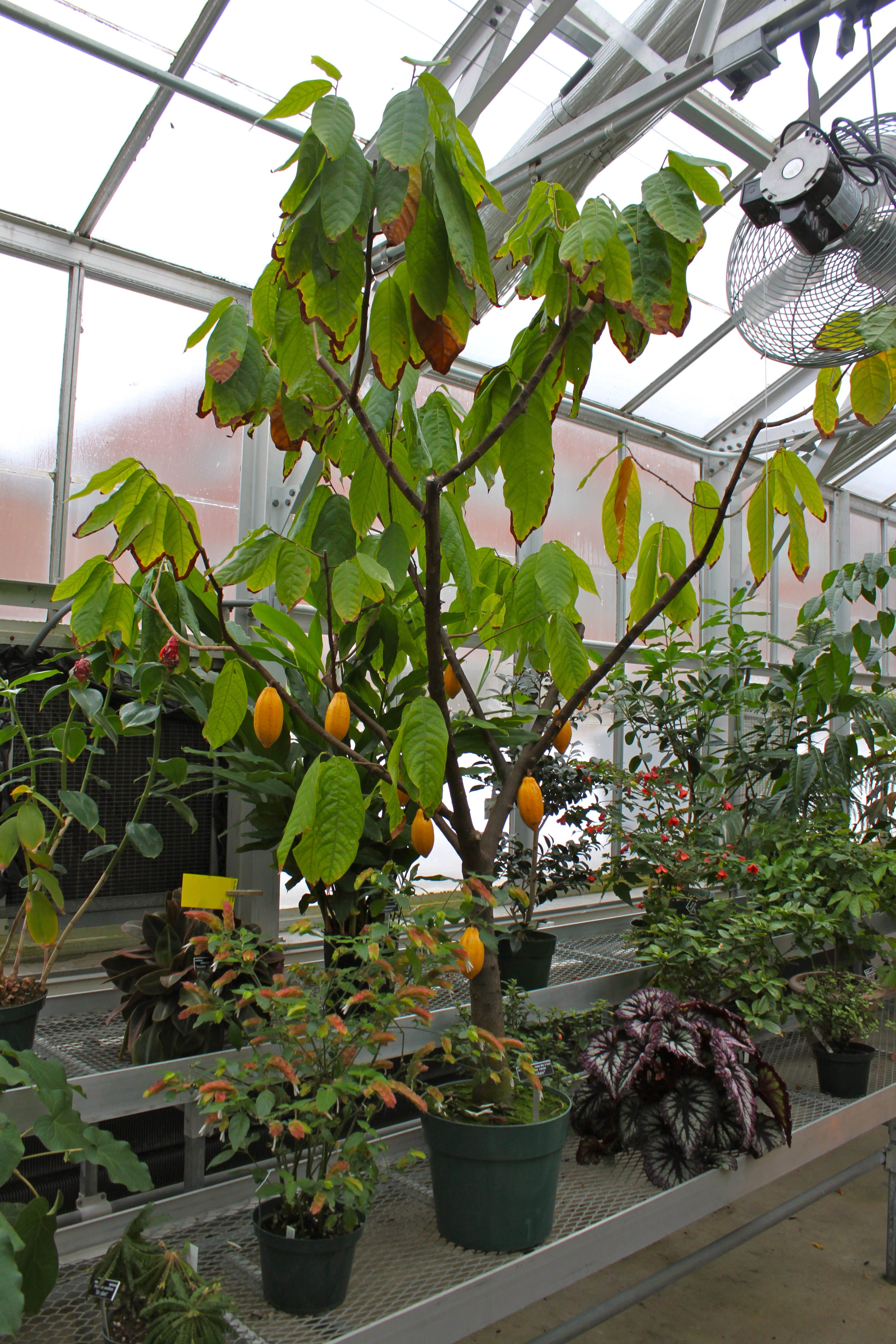Cacao Tree : UVM Campus Cacao Tree
The Cacao tree was brought to UVM due to its high demand. Teachers that lead service learning courses to Costa Rica and the plant biology department asked the greenhouse to import the Cacao tree. They wanted it so students could get accustomed to the tree before going to see them growing naturally. Now, it is also used in the tropical plant systematics course because it is a good economic representative of the family Malvaceae and the Cacao tree is featured in all greenhouse tours.
The tree found its way here in 1997 from a cutting brought by Mark Starrett. It gets gangly after about 5 years, so every few years they plant another tree from the seeds from the old tree. The current tree in the greenhouse is the third generation and is about 3-4 years old. Thrips are common in the greenhouse and pollenate the cacao tree. Within the next year they will plant a new seed after fermenting it.
The older trees are not forgotten. The greenhouse gives the trees away free to members of the UVM community who have access to solariums with space for the tree. The pods are also given to anyone in the community that needs it for instruction and occasionally members of the greenhouse will make chocolate with the large pods.
Upkeep for the cacao tree is no easy job. The tree needs pruning often and requires lots of water and fertilizer. It also can have problems with pests like mealy jobs and thrips. It is quite interesting how thrips are both a pest to the cacao tree and a pollinator.
Overall, it seems as though the Cacao tree has not reached its full potential as a member of the UVM tree community. There is no current research done on the tree. Still the cacao tree holds a special place in many UVMer’s hearts. As Colleen Armstrong, head of the UVM greenhouse said, "its just really cool."

